Hyundai IONIQ 6 vs Volvo EX40 – Differences & prices compared
Compare performance, boot space, consumption and price in one view.
Find out now: which car is the better choice for you – Hyundai IONIQ 6 or Volvo EX40?
The Hyundai IONIQ 6 (Hatchback) comes with a Electric engine and Automatic transmission. In comparison, the Volvo EX40 (SUV) features a Electric engine with Automatic transmission.
When it comes to boot capacity, the Hyundai IONIQ 6 offers 401 L, while the Volvo EX40 provides 410 L – depending on how much space you need. If you’re looking for more power, decide whether the 650 HP of the Hyundai IONIQ 6 or the 408 HP of the Volvo EX40 suits your needs better.
In terms of consumption, the values are 13.90 kWh per 100 km for the Hyundai IONIQ 6, and 16.60 kWh for the Volvo EX40.
Price-wise, the Hyundai IONIQ 6 starts at 37600 £, while the Volvo EX40 is available from 42800 £. Compare all the details and find out which model fits your lifestyle best!
In the electrifying face-off between the Hyundai IONIQ 6 and the Volvo EX40, both models shine with distinctive eco-friendly credentials and advanced technology. The IONIQ 6 stands out with its sleek, aerodynamic design and commendable range, appealing to those who value efficiency and futuristic aesthetics. Meanwhile, the Volvo EX40 impresses with its robust Scandinavian build and a suite of safety features, making it a formidable contender in the compact electric SUV segment.
Hyundai IONIQ 6
The Hyundai IONIQ 6 merges futuristic design with eco-friendly technology, offering a glimpse into the future of electric mobility. Its sleek silhouette and aerodynamic profile are sure to capture attention on the road, while the interior provides a seamless blend of comfort and cutting-edge digital features. With a focus on efficiency and sustainability, this model represents a significant step forward in the evolution of electric vehicles.
details @ hyundai.news
@ hyundai.news
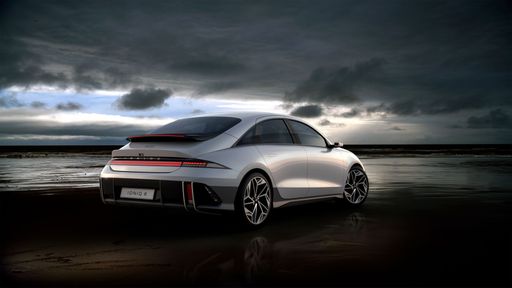 @ hyundai.news
@ hyundai.news
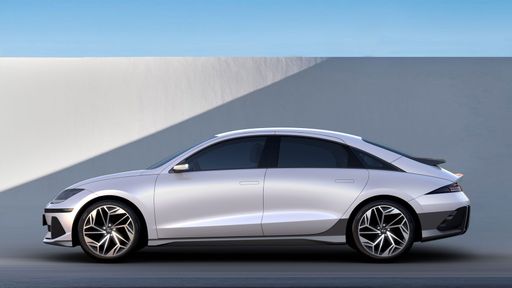 @ hyundai.news
@ hyundai.news
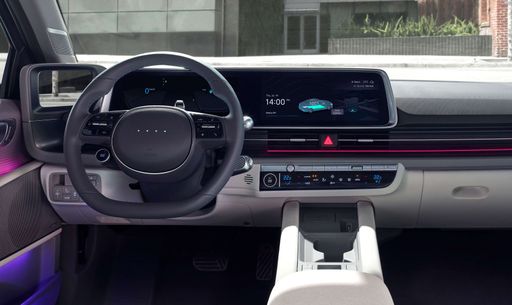 @ hyundai.news
@ hyundai.news
Volvo EX40
The Volvo EX40 represents a new chapter in the brand's commitment to sustainability and innovation, combining elegant Scandinavian design with cutting-edge electric vehicle technology. With its spacious interior and intuitive technology, the EX40 provides a comfortable and connected driving experience. The focus on eco-friendly materials and efficient performance makes it an attractive choice for those seeking a responsible and stylish drive.
details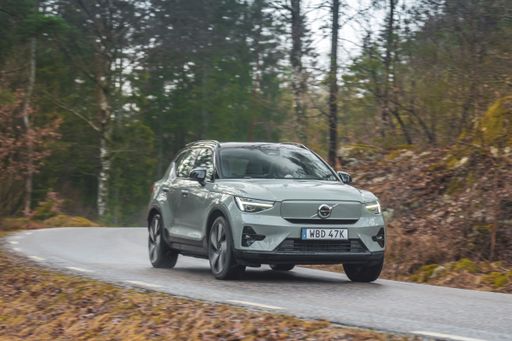 @ media.volvocars.com
@ media.volvocars.com
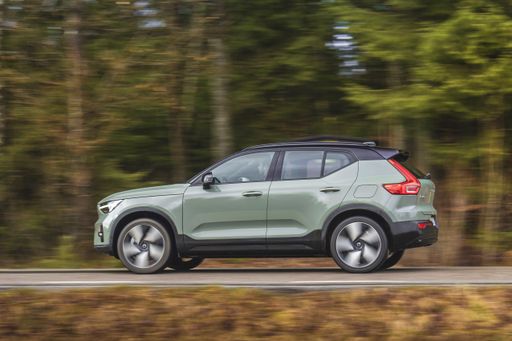 @ media.volvocars.com
@ media.volvocars.com
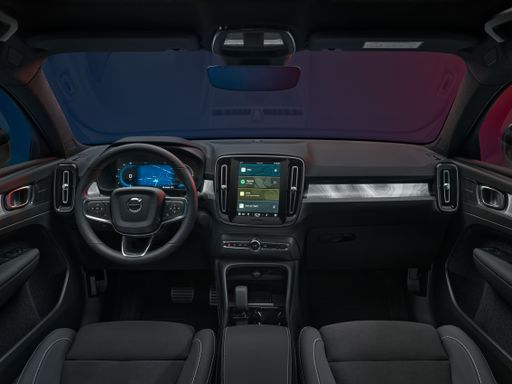 @ media.volvocars.com
@ media.volvocars.com
Hyundai IONIQ 6 vs. Volvo EX40: A Battle of Electric Innovators
In the rapidly evolving world of electric vehicles, two models are capturing attention for their unique blend of performance, design, and technology: the Hyundai IONIQ 6 and the Volvo EX40. While both are electric, they cater to different segments with distinct offerings. Let’s dive into a comparative analysis of these electrifying roadsters.
Design and Dimensions
The Hyundai IONIQ 6 presents as a sleek hatchback with a futuristic design, measuring 4855 mm in length, 1880 mm in width, and 1495 mm in height. It exudes aerodynamic elegance that reflects in its smooth lines and coupe-like posture. In contrast, the Volvo EX40 stands as a compact SUV at 4440 mm long, 1863 mm wide, and 1647 mm tall, offering a robust and resilient look typical of SUVs.
Performance and Power
Under the hood, the IONIQ 6 offers a range of power outputs, topping at 325 hp (239 kW) with an impressive torque of 605 Nm, translating to a brisk acceleration from 0 to 100 km/h in 5.1 seconds. It tops out at a max speed of 185 km/h, all while maintaining an electric range of up to 614 km, thanks to its efficient kWh consumption.
Volvo's EX40, on the other hand, echoes its Scandinavian roots with power ratings up to 408 hp (300 kW) and a tremendous torque of 670 Nm. This enables the SUV to sprint from 0 to 100 km/h in just 4.6 seconds, slightly edging out the Hyundai in acceleration. The EX40 maintains an admirable range of up to 576 km on a full charge, aimed at those who desire quick power and efficiency.
Technology and Efficiency
Both vehicles shine in technological innovation. The IONIQ 6 focuses on offering a seamless interface and connectivity features expected from Hyundai’s progressive approach to electric cars. With a transmission designed with a reduction gearbox, its efficiency ratings are promising, showcasing a consumption as low as 13.9 kWh/100 km.
Meanwhile, the Volvo EX40 stays true to its promise of delivering an eco-friendly experience with a maximum consumption of 17.1 kWh/100 km. Volvo prides itself on sustainability and safety technologies, integrated with advanced driver assistance systems and luxury infotainment features.
Practicality and Comfort
Regarding space, the Volvo EX40 with its SUV build provides a more raised driving position and a higher payload capacity up to 480 kg, making it ideal for families or those needing extra cargo room. It also boasts a slightly larger trunk capacity of 410 L compared to the IONIQ 6’s 401 L.
The IONIQ 6, while slightly less spacious, offers an exceptional ride comfort and a sophisticated aura, wrapped in an environmentally friendly package with its CO2 dedication.
The Verdict
The decision between the Hyundai IONIQ 6 and Volvo EX40 ultimately pivots on one's priorities—be it style, power, or practicality. The Hyundai is perfect for those enamored with the idea of a stylish yet efficient hatchback, while the Volvo appeals to those who prioritize power, luxury, and a versatile driving experience. Both models, however, set the benchmark for what modern electric vehicles can deliver, proving that the future of driving is electrifying in more ways than one.

|

|
|
|
|
Costs and Consumption |
|
|---|---|
|
Price
37600 - 64300 £
|
Price
42800 - 57800 £
|
|
Consumption L/100km
-
|
Consumption L/100km
-
|
|
Consumption kWh/100km
13.9 - 15.1 kWh
|
Consumption kWh/100km
16.6 - 17.6 kWh
|
|
Electric Range
429 - 614 km
|
Electric Range
479 - 576 km
|
|
Battery Capacity
53 - 84 kWh
|
Battery Capacity
67 - 79 kWh
|
|
co2
0 g/km
|
co2
0 g/km
|
|
Fuel tank capacity
-
|
Fuel tank capacity
-
|
Dimensions and Body |
|
|---|---|
|
Body Type
Hatchback
|
Body Type
SUV
|
|
Seats
5
|
Seats
5
|
|
Doors
4
|
Doors
5
|
|
Curb weight
1850 - 2095 kg
|
Curb weight
2040 - 2170 kg
|
|
Trunk capacity
401 L
|
Trunk capacity
410 L
|
|
Length
4855 - 4935 mm
|
Length
4440 mm
|
|
Width
1880 - 1940 mm
|
Width
1863 mm
|
|
Height
1495 mm
|
Height
1647 mm
|
|
Payload
425 - 430 kg
|
Payload
430 - 480 kg
|
Engine and Performance |
|
|---|---|
|
Engine Type
Electric
|
Engine Type
Electric
|
|
Transmission
Automatic
|
Transmission
Automatic
|
|
Transmission Detail
Reduction Gearbox
|
Transmission Detail
-
|
|
Drive Type
Rear-Wheel Drive, All-Wheel Drive
|
Drive Type
Rear-Wheel Drive, All-Wheel Drive
|
|
Power HP
151 - 650 HP
|
Power HP
238 - 408 HP
|
|
Acceleration 0-100km/h
3.2 - 8.8 s
|
Acceleration 0-100km/h
4.6 - 7.3 s
|
|
Max Speed
185 - 257 km/h
|
Max Speed
180 km/h
|
|
Torque
350 - 770 Nm
|
Torque
420 - 670 Nm
|
|
Number of Cylinders
-
|
Number of Cylinders
-
|
|
Power kW
111 - 478 kW
|
Power kW
175 - 325 kW
|
|
Engine capacity
-
|
Engine capacity
-
|
General |
|
|---|---|
|
Model Year
2022 - 2025
|
Model Year
2024
|
|
CO2 Efficiency Class
A
|
CO2 Efficiency Class
A
|
|
Brand
Hyundai
|
Brand
Volvo
|
Hyundai IONIQ 6
Introducing the Hyundai IONIQ 6: A New Era of Electric Mobility
The Hyundai IONIQ 6 is more than just a car; it's a glimpse into the future of electric mobility. With cutting-edge technology, impressive performance, and a sustainable design, this vehicle stands as a beacon for the automotive industry's electric revolution. Let's delve into what makes the IONIQ 6 a standout choice in the rapidly growing electric vehicle market.
Performance and Power: The Heart of the IONIQ 6
The Hyundai IONIQ 6 offers two battery options – a 53 kWh version and a more powerful 77.4 kWh variant. Depending on the configuration, drivers can experience a power output ranging from 151 PS to a remarkable 325 PS, highlighting the versatility of this model. With a maximum torque of up to 605 Nm, acceleration from 0-100 km/h is achieved in just 5.1 to 8.8 seconds, catering to both efficiency enthusiasts and those with a penchant for speed.
Efficiency and Range: Long Journeys Made Easy
One of the IONIQ 6's standout features is its exceptional range. Offering an electric range between 429 km to an impressive 614 km on a single charge, it's designed to go the distance. Efficiency is at the forefront, with energy consumption between 13.9 kWh/100km and 15.1 kWh/100km, ensuring that your driving experience remains as eco-friendly as it is enjoyable. All variants boast a CO2 efficiency class of A, reflecting Hyundai's commitment to sustainability.
Design and Interior: Luxury Meets Sustainability
The IONIQ 6's sleek, aerodynamic design is not only visually stunning but also functional, reducing air resistance to maximise efficiency. Offering a hatchback style, it comfortably seats five, ensuring ample space for passengers and luggage. The interior is crafted with sustainable materials, combining advanced technology with an eco-conscious ethos. With a boot capacity of 401 litres, it seamlessly balances practicality with style.
Technology and Innovation: Driving into the Future
Packed with the latest automotive technologies, the IONIQ 6 integrates the future of driving with present-day conveniences. It features a state-of-the-art automatic transmission with a reduction gearbox that ensures smooth driving dynamics. Its advanced driver assistance and safety systems provide peace of mind on every journey, making it an ideal choice for progressive drivers who embrace technology.
Conclusion: A Competitively Priced Electric Option
The Hyundai IONIQ 6 offers an enticing blend of performance, range, and sustainability. With prices ranging from €43,900 to €64,200, it represents excellent value for an electric vehicle of its calibre. Monthly costs are competitively set between €1066 to €1379, while cost per km ranges between 42.7 to 55.2 cents, appealing to cost-conscious customers without compromising on quality or innovation. The IONIQ 6 is a triumph of modern engineering, making it a strong contender in the electric vehicle market.
Volvo EX40
Introducing the Volvo EX40: A New Era for Electric SUVs
The Volvo EX40 marks an exciting shift in the automotive industry, integrating the latest electric powertrain technology with Volvo's renowned design and safety features. The EX40 offers a compact yet robust presence on the road, making it an ideal choice for eco-conscious drivers looking for performance and style.
Power and Performance
Under the hood, the EX40 offers a range of powertrains to suit diverse driving needs. With power outputs ranging from 238 to an impressive 408 PS, the EX40 ensures dynamic driving experiences. Choose between the efficient Single Motor option or go for the twin-motor setup for all-wheel drive capability and enhanced performance. The acceleration capability ranges from 0 to 100 km/h in 4.6 to 7.3 seconds, offering both efficiency and excitement.
Battery and Range
Volvo equips the EX40 with battery capacities from 67 to 79 kWh, supporting an electrical range between 479 and 576 km, depending on the model. These impressive figures provide peace of mind during long journeys, while the energy consumption ranges from 16.6 to 17.6 kWh/100km, reinforcing its efficiency credentials.
Innovations in Safety and Technology
Volvo continues to uphold its commitment to safety with the EX40. The vehicle is fitted with cutting-edge safety systems and driver-assistance features, ensuring that you and your passengers remain protected on the road. The interior boasts a state-of-the-art infotainment system, integrating seamlessly with your smart devices to keep you connected wherever you go.
Design and Comfort
The Volvo EX40 embodies a sleek and modern design, characterised by clean lines and a bold stance. It offers a spacious interior with seating for up to five passengers, prioritising both comfort and functionality. The boot offers 410 litres of space, catering to your everyday storage needs. Various equipment lines such as the Core, Essential, and Plus Black Edition, provide options for personalising the vehicle to your taste.
Efficiency and Environment
With a CO2 efficiency class of A, the Volvo EX40 champions the brand's vision towards a sustainable future. Its all-electric powertrain emits zero CO2 emissions, aligning with environmentally friendly principles without compromising performance.
A New Benchmark in Electric SUVs
The Volvo EX40 sets a new benchmark for electric SUVs by marrying elegance, performance, and sustainability. For drivers who demand the best in innovation and style, the EX40 promises an unmatched driving experience within the electric vehicle market.
The prices and data displayed are estimates based on German list prices and may vary by country. This information is not legally binding.
